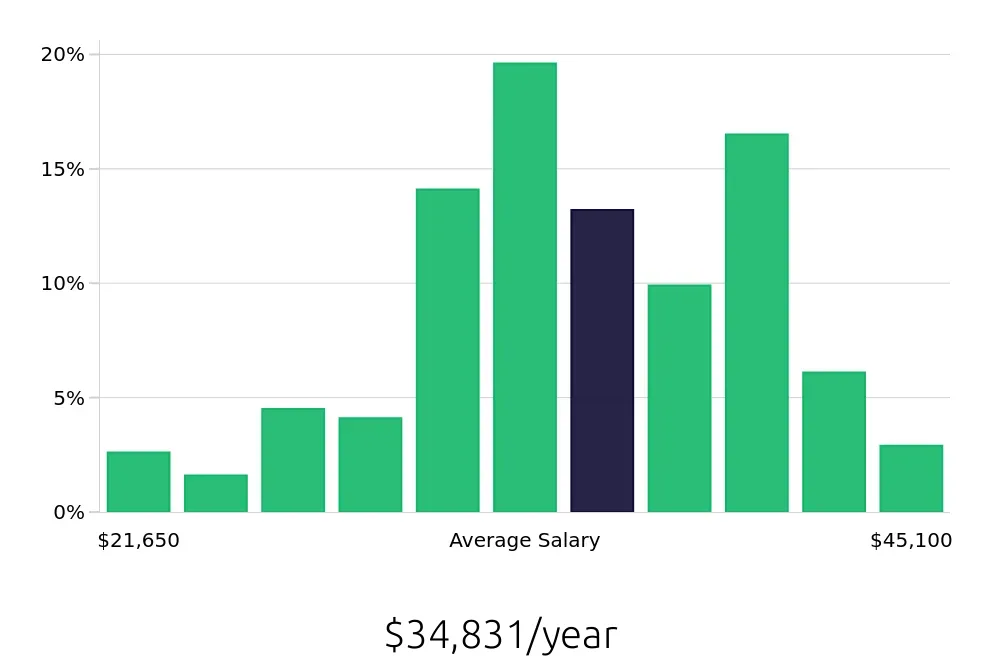Position
Overview
A Seafood Clerk plays a vital role in the retail environment, ensuring that fresh seafood products meet customer needs. This position involves selecting, preparing, and displaying seafood items to attract customers. The clerk must have a keen eye for quality and freshness, ensuring that all products are stored properly to maintain their quality. They also assist customers in choosing the best seafood options for their needs, providing information on different types of seafood and their uses.
Responsibilities of a Seafood Clerk include maintaining inventory, restocking shelves, and managing the seafood section. They work closely with other staff members to ensure that the store runs smoothly and that customers receive excellent service. This role requires attention to detail, strong communication skills, and a passion for providing high-quality seafood products. The Seafood Clerk must also adhere to health and safety regulations, ensuring that all seafood is handled and stored correctly to prevent contamination.
Becoming a Seafood Clerk can be a rewarding career path for those who enjoy working with fresh products and serving customers. This job involves handling seafood, ensuring it is fresh, and assisting customers with their purchases. Here are the steps to take to become a Seafood Clerk.
First, obtain a high school diploma or GED. This is the basic requirement for most entry-level jobs. Next, gain experience in a retail or food service environment. Working in a grocery store, restaurant, or market can provide valuable skills and knowledge. Look for positions that involve customer service and handling food products. Additionally, consider taking courses in food safety and handling. Many employers prefer candidates who have completed these courses. Another step is to develop strong communication skills. Seafood Clerks interact with customers, so being able to explain products and answer questions is important. Finally, apply for positions at grocery stores, seafood markets, or other relevant businesses. Prepare a resume that highlights your experience and skills.
Follow these steps to start your career as a Seafood Clerk. With the right preparation, you can find a job that suits your interests and skills.
Interested in a career as a Seafood Clerk? This role offers a unique opportunity to work with fresh, high-quality products. The journey to becoming a Seafood Clerk can vary. Most positions require a high school diploma or equivalent. Some employers may prefer candidates with additional training or experience in food handling and safety.
Training programs can last from a few weeks to several months. These programs cover essential skills such as fish identification, proper storage techniques, and customer service. Many programs also include hands-on experience, which helps new clerks gain confidence and competence quickly. With the right training, individuals can start their career in this exciting field in a relatively short time.
The Seafood Clerk is responsible for ensuring the quality and freshness of seafood products in a retail setting. This role involves direct interaction with customers, maintaining inventory, and adhering to food safety standards.
Responsibilities:
Qualifications
Working as a Seafood Clerk offers a unique blend of responsibilities and opportunities. This role involves handling fresh seafood, ensuring quality, and assisting customers. Seafood Clerks often work in grocery stores, supermarkets, or specialty seafood markets. They must be knowledgeable about different types of seafood and their uses. This job provides hands-on experience with food products and customer service.
The career path of a Seafood Clerk has its own set of advantages and challenges. Understanding these can help job seekers decide if this role is right for them. Here are some pros and cons to consider:
The job outlook for Seafood Clerks shows steady growth, with an average of 41,700 positions available each year. This trend indicates a stable demand for professionals in this field. Job seekers can expect a positive career path with consistent opportunities for employment.
According to the Bureau of Labor Statistics (BLS), the number of job openings for Seafood Clerks is expected to increase by 0.1% from 2022 to 2032. This modest growth suggests a reliable job market for those entering or already in this profession. Job seekers can look forward to a growing number of positions over the next decade.
Seafood Clerks earn an average national annual salary of $38,350. This translates to an hourly wage of $18.44. These figures provide a clear picture of the financial rewards associated with this career. Job seekers can anticipate a fair compensation package that reflects the value of their skills and expertise in the seafood industry.
